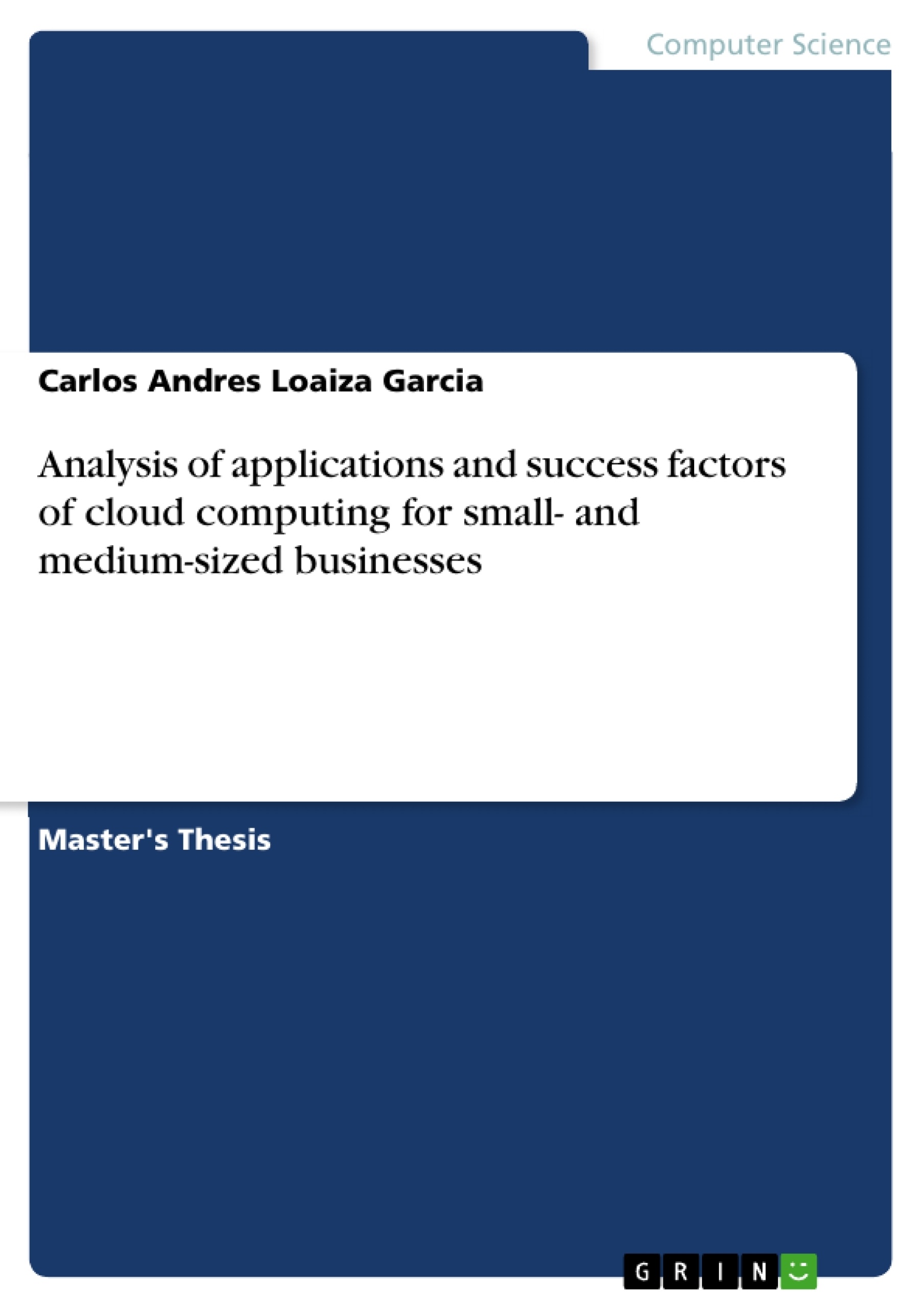Cloud computing is gaining importance in the industry and specially within small and medium-sized companies due to the many benefits in terms of cost savings, faster time to market, scalability, cost flexibility and optimization of resources. Today, cloud computing is considered as the next IT revolution and the number of articles, books, papers and technical reports flood the literature.
Within the scope of this master thesis, relevant cloud computing applications for small- and medium- sized companies are identified and the key success factors for adoption of cloud computing services are analyzed based on the empirical investigation performed as part of this work.
Finally, the benefits and constraints of the different cloud computing service models are presented including also the state-of-the-art research in the cloud computing area and a summary of the most important results.
Inhaltsverzeichnis (Table of Contents)
- Introduction
- Context
- Objective and structure
- Methods
- Fundamentals
- Fundamentals of software applications
- Definition and characteristics
- Type of software applications
- Email communication
- Office applications
- Project management
- Team collaboration
- Customer relationship management
- Procurement
- Web development
- Unified messaging
- Enterprise resource planning
- Fleet management
- Human resource
- Fundamentals of cloud computing
- Definition and characteristics
- Computer topology evolution
- Mainframe
- Client-Server
- Mesh topology
- Cloud computing service models
- Infrastructure as a Service
- Platform as a Service
- Software as a Service
- Advantages and limitations of cloud computing
- Advantages of cloud computing
Zielsetzung und Themenschwerpunkte (Objectives and Key Themes)
This master thesis aims to identify relevant cloud computing applications for small and medium-sized companies. Additionally, the key success factors for the adoption of cloud computing services are analyzed based on empirical research. The work also explores the benefits and constraints of different cloud computing service models and presents an overview of the current state of research in the cloud computing field.
- Cloud computing applications for small and medium-sized businesses
- Key success factors for adopting cloud computing services
- Benefits and constraints of different cloud computing service models
- Current state of research in the cloud computing field
- Analysis of the impact of cloud computing on businesses
Zusammenfassung der Kapitel (Chapter Summaries)
The first chapter introduces the context, objective, and methods of the thesis. It explains the significance of cloud computing for small and medium-sized businesses and outlines the research questions and methodologies used. The second chapter provides a comprehensive overview of the fundamentals of software applications and cloud computing. It delves into the definition, characteristics, and types of software applications commonly used by businesses, including email communication, office applications, project management tools, and customer relationship management software. It also discusses the evolution of computer topology and explores different cloud computing service models, including Infrastructure as a Service (IaaS), Platform as a Service (PaaS), and Software as a Service (SaaS). The chapter further examines the advantages and limitations of cloud computing, highlighting the benefits in terms of cost savings, scalability, and flexibility, while also acknowledging potential challenges such as security concerns and vendor lock-in.
Schlüsselwörter (Keywords)
Cloud computing, small and medium-sized businesses, software applications, cloud computing service models, IaaS, PaaS, SaaS, success factors, cost savings, scalability, flexibility, security, vendor lock-in, empirical research, state-of-the-art research.
- Fundamentals of software applications
- Citar trabajo
- Carlos Andres Loaiza Garcia (Autor), 2012, Analysis of applications and success factors of cloud computing for small- and medium-sized businesses, Múnich, GRIN Verlag, https://www.grin.com/document/209530



